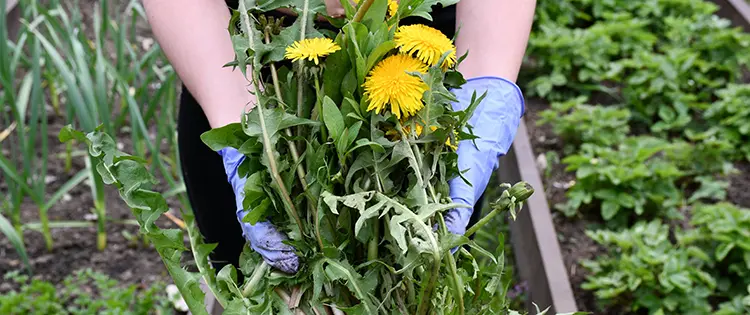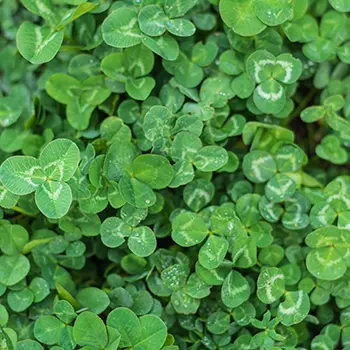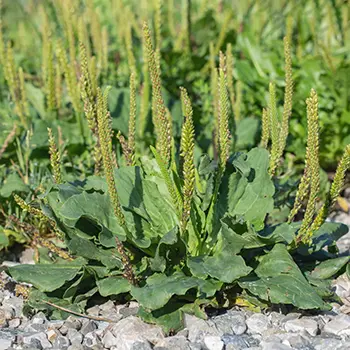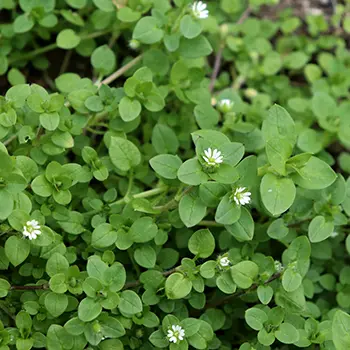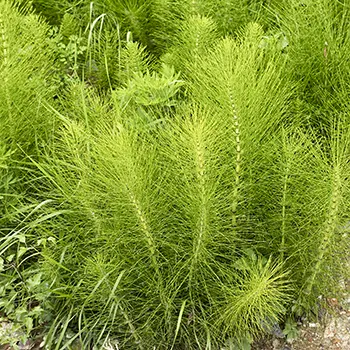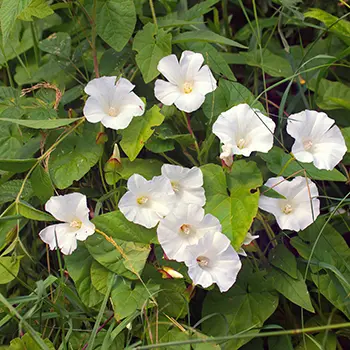“Why are these weeds growing in my garden?”
Well, you’ll be surprised to find out that they are growing in your garden for a reason.
North America has a diverse range of gardening soil types due to its varying climate, geology, and ecosystems. While the specific number of gardening soil types can be difficult to quantify precisely, gardeners often classify soils based on their properties and suitability for cultivating plants.
- Sandy Soil
- Clay Soil
- Loam Soil
- Silt Soil
- Peat Soil
- Chalky Soil
- Acidic Soil
- Calcareous Soil
- Saline or Sodic Soil
- Muck or Organic Soil
- Rocky Soil
Related: How to Adjust the pH in Soil and Water for Abundant Harvests
It’s important to note that soil conditions can vary even within a specific region, and the success of gardening depends on various factors, including plant selection, soil amendments, and proper management practices. Conducting a soil test and understanding the specific needs of the plants you intend to grow will help you determine the best approach to gardening in your area.
The most common gardening soil type in North America is loam soil. Loam soil is often considered the ideal soil type for gardening because of its well-balanced mixture of sand, silt, and clay particles. It combines the best properties of these three soil components, making it suitable for a wide variety of plants.
How To Use Weeds To Read Your Soil
While the types of weeds present in a certain area can provide some clues about the soil conditions, they aren’t a foolproof method for determining the exact soil type.
Weeds can grow in a variety of soil types and conditions, so using them alone might not provide a highly accurate assessment.
However, certain types of weeds are associated with specific soil conditions.
Dandelions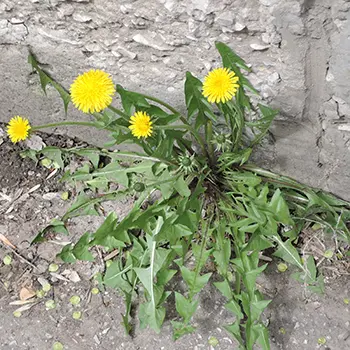
Dandelions are often associated with compacted soils and poor drainage due to their ability to adapt to challenging soil conditions.
They have a long taproot that can penetrate deep into the soil. This taproot allows them to access water and nutrients from deeper layers, even in compacted soils where surface water may have difficulty infiltrating.
The process of dandelions pushing their taproots deep into the soil can actually help to break up compacted soil, creating channels that allow water and air to penetrate. This process is known as bioturbation and can improve soil structure over time.
The deep taproot of dandelions allows them to store water, which helps them survive periods of drought and poor drainage. They can draw on these stored water reserves during times when the soil is saturated.
Related: Do This ‘Till Your Fingers Turn Yellow
Dandelions are early spring bloomers. They can take advantage of the moisture available in compacted soils before other plants have a chance to establish themselves.
These weeds also have a successful reproductive strategy. Their fluffy seeds can be easily carried by the wind to new areas, allowing them to spread and colonize different locations, including areas with challenging soil conditions.
While dandelions are often seen as weeds, they do play a role in soil improvement by helping to break up compacted soils and improve water infiltration. However, their adaptability and persistence can also make them a challenge to manage in lawns and gardens.
Clover
Clover tends to thrive in soils that are nitrogen-rich and well-drained due to its unique biological characteristics and symbiotic relationship with nitrogen-fixing bacteria.
One of the key reasons clover thrives in nitrogen-rich soils is its ability to form a symbiotic relationship with nitrogen-fixing bacteria known as rhizobia. These bacteria live in nodules on the roots of clover plants.
They have the remarkable ability to convert atmospheric nitrogen into a form that the plant can use for growth. This gives clover a competitive advantage in nitrogen-deficient environments.
In nitrogen-rich soils, many other plants may struggle to access additional nitrogen because they are not equipped with the same nitrogen-fixing ability as clover. This can give clover weed a competitive edge in such environments, allowing it to outcompete other plants.
Related: 12 Native American Remedies That We Lost To History
Clover prefers well-drained soils because excessive waterlogging can lead to root rot and other diseases. Well-drained soils ensure that water doesn’t accumulate around the roots, promoting healthy growth.
The nitrogen-fixing ability of clover also contributes to nutrient cycling in the soil. As clover plants grow and eventually die, they release nitrogen-rich organic matter into the soil, enriching it with nutrients for other plants to utilize.
Clover’s deep root system helps it access water from deeper soil layers. This can provide a degree of drought tolerance, allowing clover to survive in well-drained soils even during dry periods.
Overall, clover’s ability to fix nitrogen, coupled with its preference for well-drained soils, allows it to thrive in nitrogen-rich environments while also benefiting the soil and the surrounding ecosystem.
Plantain
Plantain, a common weed often found in lawns and disturbed areas, is known for its ability to tolerate compacted soils.
Plantain has a relatively shallow root system that allows it to grow in soils where deeper-rooted plants might struggle due to compaction. The shallow roots can take advantage of the limited space available in compacted soils.
Plantain’s roots can access water from the upper layers of soil, which can be beneficial in compacted soils where water penetration is limited. This can give plantain a degree of drought tolerance.
These weeds are known for their sturdiness and ability to withstand foot traffic and mechanical stress. This makes them well-suited to areas where soil compaction is likely to occur due to human activity.
Related: If You See This Jumping Worm In Your Garden, Kill It Immediately!
The presence of plantain can serve as an indicator of soil compaction issues. When plantain thrives in an area, it suggests that the soil is compacted and not well-drained. This is because plantain is often one of the first plants to colonize such areas due to its adaptability to challenging soil conditions.
Plantain’s presence can also be linked to poor soil aeration. Its ability to grow in compacted soils indicates that the soil structure is limiting air movement, potentially leading to issues for other plants and soil organisms that require proper oxygen exchange.
If you notice an abundance of plantain in your lawn or garden, it might be worth considering ways to address the underlying soil compaction issues. Aeration, soil improvement techniques, and practices that promote healthier soil structure can help mitigate the conditions that favor plantain growth and encourage the growth of more desirable plants.
Chickweed
Chickweed’s ability to thrive in moist, nitrogen-rich soils is a result of its adaptive characteristics and life cycle.
Chickweed is known for its rapid growth rate and ability to reproduce prolifically. In moist, nitrogen-rich soils, chickweed can take advantage of the abundant water and nutrients to fuel its growth and reproduction.
These weeds has a shallow root system that allows it to efficiently absorb moisture from the upper layers of the soil. In moist soils, this shallow root system can quickly access available water, which supports the plant’s growth.
Nitrogen is a critical nutrient for plant growth, and chickweed is particularly adept at utilizing available nitrogen. In nitrogen-rich soils, chickweed can grow vigorously and produce a large number of seeds, contributing to its ability to colonize areas rapidly.
Related: What Happens If You Plant An Egg In Your Garden
Chickweed’s ability to grow well in moist soils is linked to its tolerance for wet conditions. Excess moisture can create challenges for some plants, but chickweed’s adaptability allows it to thrive in these environments.
These weeds are cool-season annual plants. It tends to grow in spring and fall when temperatures are cooler and moisture levels are often higher. Its growth cycle aligns well with the conditions of moist, nitrogen-rich soils typically found during these seasons.
Chickweed’s rapid growth and ability to form dense mats can outcompete other plants in these soil conditions, particularly in areas where there may be disturbances or open spaces.
Overall, chickweed’s preference for moist, nitrogen-rich soils allows it to take advantage of available resources and thrive under conditions that might be less suitable for other plants. This adaptability, along with its efficient use of nutrients and rapid growth cycle, contributes to its success as a weed in various environments.
Horsetail
Horsetail, also known as Equisetum, often thrives in soils that are poorly drained and acidic due to its unique biology and adaptation to these specific environmental conditions.
Horsetail has a long evolutionary history and possesses adaptations that allow it to grow in waterlogged or poorly drained areas. It has hollow, jointed stems that can hold air, aiding in buoyancy and facilitating gas exchange even in saturated soils.
These weeds spreads through underground rhizomes, which are specialized stems that allow the plant to reproduce and expand. These rhizomes can tolerate wet conditions and allow horsetail to colonize areas with poor drainage.
Horsetail has a certain degree of tolerance to acidic soils. It can handle pH levels that might be challenging for other plants. This adaptability to acidic conditions can give it an advantage in environments where other plants might struggle.
Related: What Happens If You Spread Coffee Grounds In Your Garden
It is often one of the first plants to establish itself in disturbed or degraded areas, such as poorly drained and acidic sites. Its ability to quickly colonize these areas aids in soil stabilization and nutrient cycling, particularly in environments where other vegetation might not yet be established.
The specific conditions of poorly drained and acidic soils might limit the competition from other plants that are less adapted to these conditions. This gives horsetail an opportunity to dominate in these environments.
Horsetail has been studied for its ability to extract heavy metals from contaminated soils, potentially due to its efficient nutrient uptake mechanisms. This unique trait can also contribute to its success in challenging environments.
While horsetail’s presence can indicate poorly drained and acidic soils, it’s important to note that horsetail itself can sometimes create issues in gardens and landscapes due to its invasive nature and ability to spread rapidly. Managing horsetail often involves improving soil drainage and addressing underlying soil health issues to discourage its growth.
Bindweed
Bindweed, also known as field bindweed or Convolvulus arvensis, is a pervasive weed that tends to thrive in nutrient-poor soils and can indicate low soil fertility.
Bindweed is highly adaptable and has a strategy that allows it to allocate resources efficiently. In nutrient-poor soils, it can invest its resources more effectively than many other plants, giving it a competitive advantage.
It is a hardy plant that doesn’t require high levels of nutrients for growth. It can scavenge and utilize nutrients more efficiently than some other plants, allowing it to thrive even when soil nutrient levels are low.
In soils with low fertility, there may be fewer competing plants that can outcompete bindweed. This lack of competition allows bindweed to establish itself and spread more easily.
Bindweed has an extensive root system that can store nutrients and help it survive periods of nutrient scarcity. This root system enables bindweed to access nutrients from a wider area of the soil, even if the immediate vicinity has low nutrient levels.
Related: Veggies You Only Plant Once And Harvest Forever
Bindweed is known for its vigorous growth rate and ability to produce numerous seeds. In nutrient-poor soils, it can allocate energy towards growth and reproduction, which helps it colonize and dominate areas quickly.
These weeds can persist in soil for multiple years, allowing it to take advantage of sporadic nutrient availability over time.
The presence of bindweed can be an indicator of low soil fertility. If bindweed is thriving in an area, it suggests that the soil may lack the necessary nutrients to support more desirable plant species.
Managing bindweed often involves improving soil fertility, enhancing competition from desired plants, and using appropriate weed control methods. Fertilization, proper plant selection, and cultural practices that promote healthy soil conditions can help suppress the growth of bindweed and discourage its establishment.
Final Thoughts
Testing your soil to determine its type and characteristics is just one of the steps in successful gardening.
Remember that soil type is not the only important factor in gardening success. Soil pH, drainage, fertility, and other characteristics also play critical roles.
Professional soil testing can provide a comprehensive overview of your soil’s properties, enabling you to make informed decisions about soil amendments, plant selection, and care practices.
You may also like:
The Plants That Are Illegal To Grow, But Perfectly Fine To Forage
8 Most Effective Amish Home Remedies You Haven’t Heard About (Video)
Vegetables You Didn’t Know You Could Turn Into Remedies
Water Ban: How To Keep Your Garden Growing

